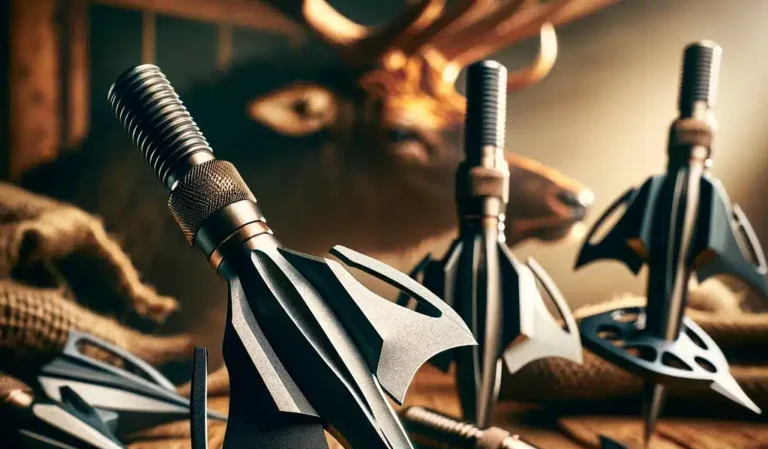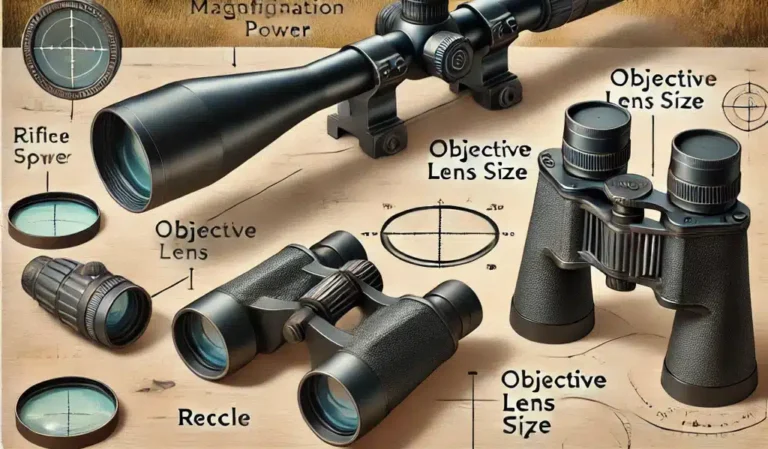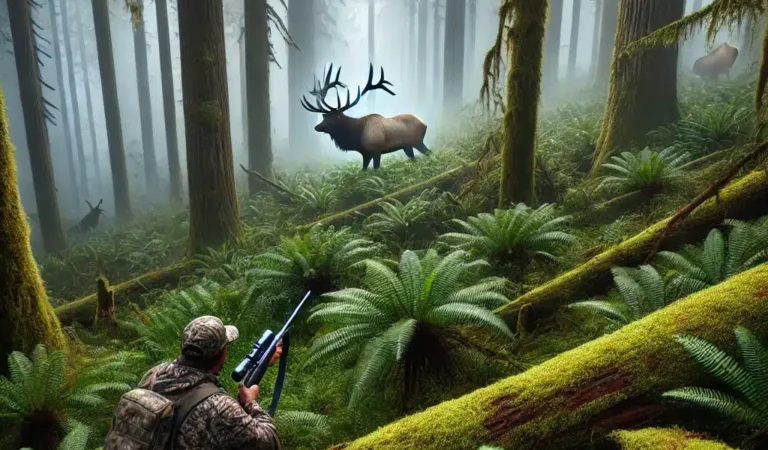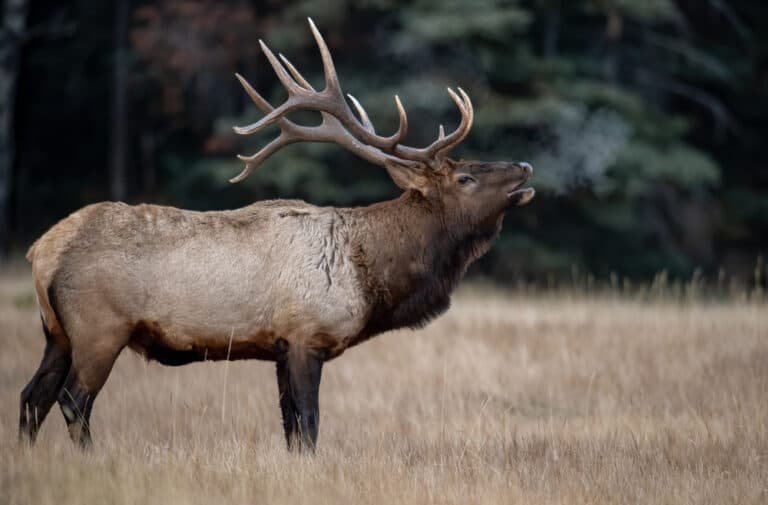Elk Hunting: 7 Strategies That Will Transform Your Adventure
The bull elk’s bugle pierces through the predawn darkness, sending chills down my spine. At 10,000 feet in the Colorado Rockies, where the air is thin and unforgiving, this ancient sound ignites something primal in every hunter who hears it. Yet despite this raw calling that draws thousands of hunters to the mountains each season, fewer than 10% will fill their tags. Let’s learn more about elk hunting.
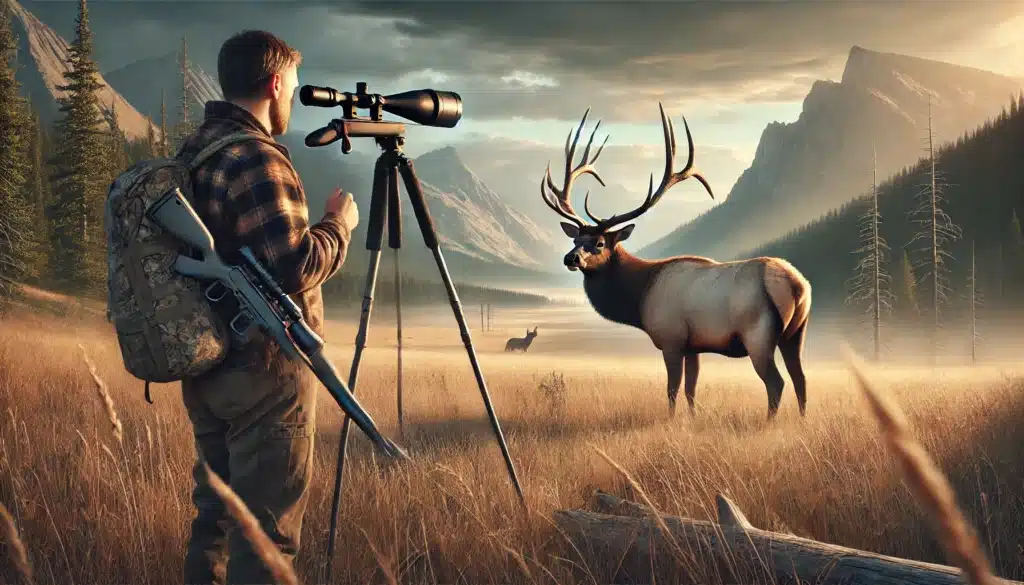
After 15 years of chasing these majestic creatures across the American West, I’ve learned that successful elk hunting isn’t just about luck – it’s about mastering a specific set of skills and strategies that separate tag-fillers from tag-burners.
In this guide, I’ll share the 7 proven approaches that transformed me from an optimistic rookie into a consistent elk hunter.
What you’ll learn isn’t just generic advice you can find anywhere. These are hard-won insights that have helped my clients and me track, pattern, and successfully harvest elk across multiple states and terrains.
Whether you’re planning your first elk hunt or looking to improve your success rate, these strategies will help you face the mountain with confidence.
Strategy #1: Fitness First – The Mountain Hunter’s Edge
Stay with me if you’re nodding off and thinking this is just another “get in shape” lecture. The difference between good and great elk hunting fitness isn’t just about logging miles on a treadmill. It’s about a specific type of conditioning that matches the unique demands of elk country.
Picture this: You’ve just climbed 2,000 vertical feet before sunrise, spotted a bull at first light, and now need to quickly descend into the next drainage and climb back up the other side to get ahead of his morning routine. Your success in the next hour will be determined not by your hunting skills but by your ability to move quickly through challenging terrain without burning out.
Here’s what your elk-specific training needs to include:
- Loaded uphill hiking (minimum 40lb pack)
- High-intensity interval training to mimic quick elevation changes
- Core strength for side-hilling stability
- Upper body conditioning for pack-outs
What is the key difference between regular fitness and elk hunting fitness? Recovery time. You need to be able to catch your breath in under 2 minutes after exertion at altitude. That’s when shooting opportunities often present themselves.

Strategy #2: The Art of the Early Season Pattern
While many hunters wait for the rut to kick in, the early season (usually September) offers a golden opportunity that most completely misses. Bulls are still in their summer feeding patterns, making them more predictable than during the chaos of the rut.
After years of exclusively hunting the rut, I learned this lesson the hard way. What changed everything? Trail cameras revealed that mature bulls would visit the same high-altitude basins and meadows almost like clockwork – until hunting pressure scattered them.
Pre-season scouting is your secret weapon. Look for:
- North-facing timber adjacent to feeding areas
- Wallows near dark timber
- Fresh rubs on trees 6-8 inches in diameter
- Concentrated droppings in meadows above 8,000 feet
The key is identifying the transition zones between bedding and feeding areas. Unlike rutting bulls that might travel miles a day, early-season elk typically stay within a 1-2 mile radius if undisturbed.
Pro Tip: Most hunters make the mistake of sleeping in during the early season because there’s no bugling action. Don’t fall into this trap. Be in position an hour before first light – elk are most active in these feeding areas during the first and last 30 minutes of daylight.
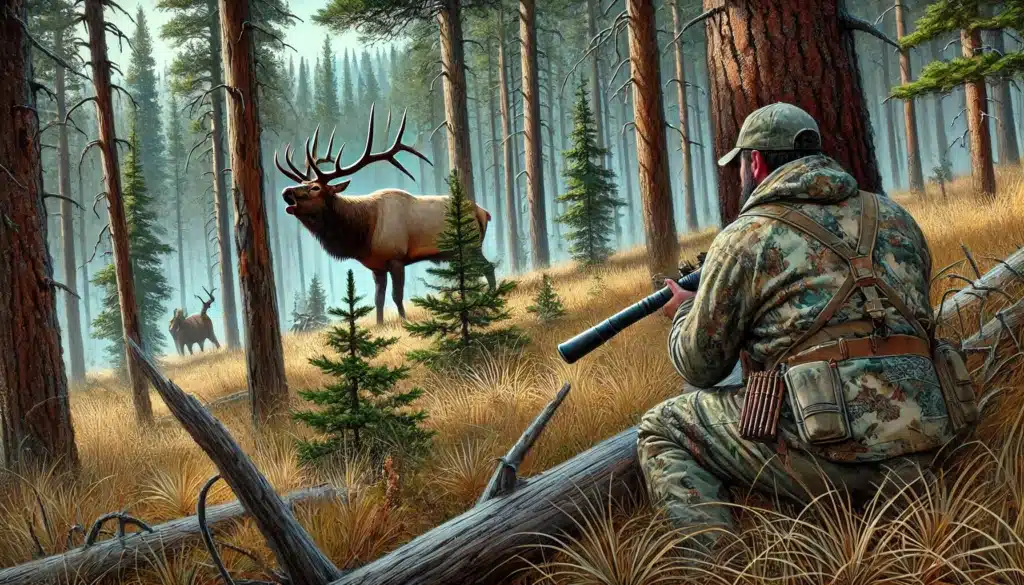
Strategy #3: Calling Tactics That Work
Forget everything you learned from hunting videos about aggressive bugling. The hard truth? Most hunters sound more like dying geese than elk, and mature bulls know the difference. After countless encounters gone wrong, I’ve developed a more nuanced approach that consistently produces results.
Here’s what works:
- Start with soft cow calls (mews) to locate elk without spooking them
- Only bugle back to a bull that’s already vocal
- Use “social sounds” (quiet mews, chirps, and feeding sounds) more than mating calls
- Master the “location bugle” – a shorter, less aggressive call that sounds like a distant bull
The Fatal Mistake Most Hunters Make: Calling too frequently and too loudly. Think about it: In nature, elk don’t constantly vocalize. When was the last time you heard a real herd making non-stop noise? They don’t.
My “30-Minute Rule” is to wait 30 minutes after any calling sequence before calling again. Bulls often circle downwind to scent-check before committing. Most hunters give up too soon, thinking their calls didn’t work.
Real-World Example: I called in a 340-class bull last season by making just three soft mews over two hours. The key? I stayed put and let the bull’s curiosity do the work. He eventually appeared exactly where I predicted – trying to circle downwind.
Strategy #4: Reading and Reacting to Hunting Pressure
The moment opening day hits, the entire elk woods transforms. What worked in scouting suddenly becomes useless as pressure pushes elk into their sanctuary zones. This is where most hunters’ seasons fall apart – but it’s also where the prepared hunter finds their biggest advantage.
Here’s what happens when pressure hits:
- Bulls abandon their predictable patterns within 48 hours
- Herds split into smaller groups
- Elk move to thicker cover and steeper terrain
- They shift to primarily nocturnal movement
- They utilize “dead zones” most hunters ignore
The Secret? Dark Timber Tactics
I call it the “Reverse Mountain Strategy.” While other hunters are hiking up high looking for elk in traditional spots, successful hunters need to:
- Focus on north-facing slopes with 70% or denser canopy cover
- Look for small benches in steep terrain (elk’s favorite bedroom)
- Hunt the “thin spaces” between heavily pressured areas
- Pay attention to thermal patterns in deep canyons
Real-Life Success Story: After three days of seeing nothing but other hunters’ boot tracks on the ridgelines, I dropped into a “too thick to hunt” canyon that everyone else walked past. At 2 PM, I found six bulls bedded on a small flat spot in terrain so steep you needed to grab trees to stay upright. That’s where I filled my tag with a 6×6 that nobody else knew existed.

Strategy #5: Weather Windows – Your Secret Weapon
Weather isn’t just something to endure during your elk hunt – it’s your most powerful ally when you know how to read it. After years of detailed hunt journals, I’ve noticed a pattern that’s almost like clockwork: major elk movement occurs in the 12-24 hours before and after a weather front.
Here’s what to watch for:
- Dropping barometric pressure signals incoming storms
- The first snow of the season triggers increased daylight activity
- Temperature drops of 15+ degrees push elk to feed heavily
- Light rain softens crunchy ground cover for silent stalking
- Winds under ten mph allow thermals to remain predictable
The Money Move: Plan your vacation time around weather fronts instead of arbitrary dates. I’ve had more success hunting 3 strategic days around weather changes than grinding out 10 days of bluebird skies.
Smart Weather Hunting Looks Like This:
- Monitor long-range forecasts starting 30 days out
- Book flexible time off if possible
- Focus efforts on dawn/dusk during pre-front conditions
- Hunt mid-day during light precipitation
- Avoid high winds (25+ mph) when elk become ultra-sensitive
True Story: I watched dozens of hunters leave the mountain during an October snowstorm. The next morning, with 4 inches of fresh snow and clear skies, I caught a herd moving from dark timber to feed. The fresh tracking conditions and increased visibility led to my biggest bull.
Remember: Bad weather makes for good hunting. Great hunters aren’t weatherproof – they’re weather-wise.
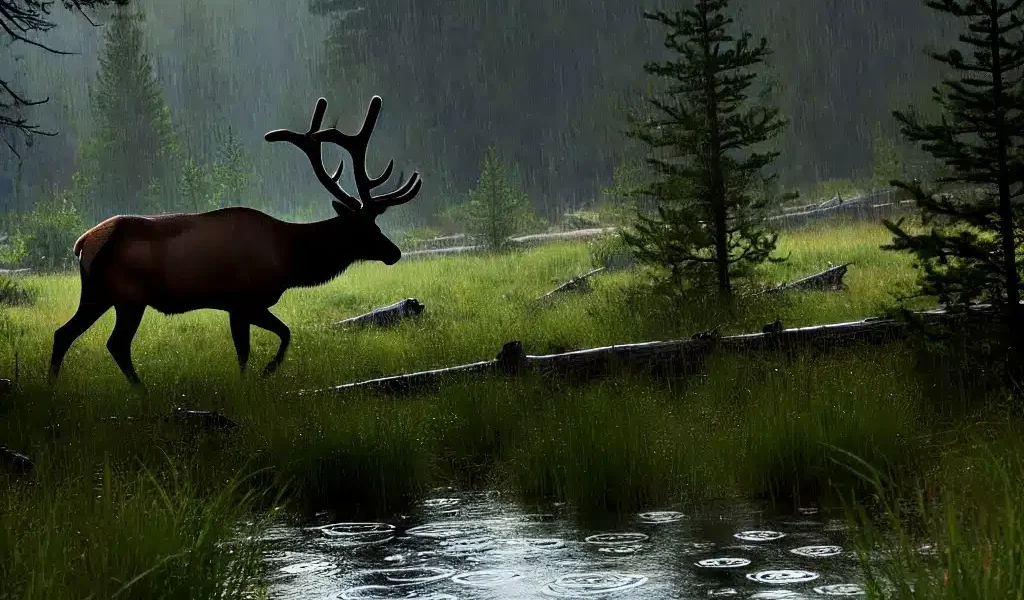
Strategy #6: The Lost Art of Reading Sign
In an age of trail cameras and GPS units, the fundamental skill of reading sign has become a lost art. Yet, it’s often the difference between finding elk and just finding where elk used to be. Let’s get granular about what the woods are telling us.
Here’s how to date elk sign with scary accuracy
- Fresh droppings: Shiny, dark, and soft with a greenish tinge
- 24-hour tracks: Sharp edges, clear hoof prints
- Recent beds: Matted grass still hasn’t sprung back up
- Feeding sign: Bright green plant stems where browsing occurred
- Fresh rubs: Exposed wood is light-colored and sappy
The Track Trap Technique: I’ve developed “track traps,” which create small, subtle areas of smooth dirt on known elk trails. Checking these daily tells you if elk passed but exactly when and in what direction.
Building Your Track Story: Look for these telling combinations:
- Tracks + fresh droppings = active feeding area
- Beds + tracks heading uphill = morning movement pattern
- Multiple beds + heavy browse = security bedding area
- Rubs + scrapes in fall = likely rutting zone
Pro Detective Work: Two years ago, I found a 6×6 bull by piecing together a story: Fresh rubs led to tracks, and tracks led to a meadow edge. Careful observation showed that all signs were from early morning. Three days later, I was in position before first light and caught him returning to his bedroom.
The Modern Twist: Use your phone to photograph sign and create waypoints. This builds a digital map of elk patterns over time – combining old-school skills with new-school tech.

Strategy #7: The Moment of Truth – Sealing the Deal
All your preparation, tracking, and hunting skills culminate in a few critical seconds. After guiding numerous hunters and experiencing my share of successes and failures, I’ve learned that what happens in these moments often has little to do with shooting ability.
The Kill Zone Blueprint
First, let’s address the elephant in the room: shot placement on elk differs from whitetails. Here’s what you need to know:
- Aim 4-6 inches higher than on deer
- The kill zone sits slightly forward and higher
- Heart shot is more reliable than lung shot on elk
- Quartering-away is preferable to broadside
- The maximum effective range should be 20% less than your practice range
Mental Management
The real secret to closing the deal? It’s all between your ears:
- Control your breathing before the shot
- Focus on a specific hair on the elk, not the whole animal
- Don’t rush – take that extra second to confirm your shot
- Have your rangefinder ready before you need it
- Prepare for the “now or never” decision
Recovery Strategy
- Wait 30 minutes minimum after the shot
- Mark your shooting position with GPS
- Take photos/video of the last known position
- Blood trail systematically, not emotionally
The Hard-Learned Truth: Your success rate on elk isn’t determined by how well you shoot at the range. It’s determined by how well you can shoot when your lungs are burning, your legs are shaking, and your heart is trying to jump out of your chest.

The Final Word
As I write this from my kitchen table, last season’s elk feeds my family, and the ivory teeth from my first bull hang on my office wall. Each successful hunt has reinforced what I’ve shared with you today. But perhaps the most important lesson isn’t about the harvest – it’s about the journey.
Elk hunting isn’t just a sport. It’s a test of everything you’re made of: your physical limits, your mental toughness, and your ability to adapt when everything goes wrong. And trust me, in elk country, things will go wrong.
But armed with these seven strategies, you’re no longer walking into the mountains hoping for luck. You’re walking in with a proven system, ready to face whatever challenges the mountain throws at you. Whether this is your first season or your fifteenth, remember: every successful elk hunter started exactly where you are now.
Good hunting.

